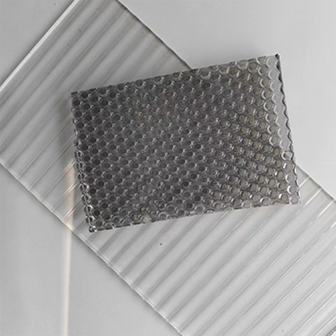Jan . 01, 2025 07:42 Back to list
Laminated Low Iron Glass for Enhanced Clarity and Durability Applications
Laminated Low Iron Glass A Modern Architectural Marvel
In contemporary architecture, the demand for advanced materials that prioritize both aesthetics and functionality is ever-growing. One such innovation is laminated low iron glass, a versatile and sophisticated material that has transformed the landscape of modern construction and design. Renowned for its clarity, strength, and safety features, this type of glass serves as a hallmark of modern architectural practices.
Understanding Laminated Low Iron Glass
Laminated low iron glass is produced by sandwiching a layer of polyvinyl butyral (PVB) or ethylene-vinyl acetate (EVA) between two or more layers of low iron glass. Low iron glass, as opposed to regular glass, contains significantly lower levels of iron oxide, resulting in higher transparency and a clearer appearance. This property allows more natural light to enter spaces, making environments feel brighter and more welcoming. The laminating process enhances the glass's structural integrity while providing added safety features.
Benefits of Laminated Low Iron Glass
1. Enhanced Clarity and Aesthetics One of the primary advantages of laminated low iron glass is its outstanding optical clarity. With up to 90% light transmission, it optimizes natural light while minimizing the greenish tint common in standard glass. Architects and designers often prefer low iron glass for premium applications, such as facades and storefronts, where visibility and aesthetics are paramount.
2. Safety and Security The laminated structure provides a significant safety advantage. In the event of breakage, the glass shards are held together by the interlayer, which prevents them from shattering and causing injuries. This characteristic makes it ideal for high-traffic areas and buildings that require enhanced safety measures, such as schools and hospitals.
3. UV Protection Laminated low iron glass helps block harmful UV rays, protecting interiors from sun damage. This property is particularly beneficial for galleries, museums, and retail spaces, where art and merchandise can be sensitive to light exposure.
laminated low iron glass

4. Acoustic Insulation The lamination process also provides acoustic insulation, which is vital in urban environments or areas with high noise levels. This glass can significantly reduce sound transmission, creating quieter indoor spaces without sacrificing design aesthetics.
5. Sustainability As sustainability becomes more critical in construction and design, laminated low iron glass emerges as a favorable option. Its ability to maximize daylight reduces reliance on artificial lighting, ultimately contributing to lower energy consumption. Additionally, many manufacturers focus on sourcing materials responsibly, aligning with environmentally conscious practices.
Applications in Architecture and Design
Given its versatile benefits, laminated low iron glass is utilized in a variety of architectural applications. High-rise buildings often feature extensive glass facades that showcase stunning views while providing structural support. In residential applications, large glass panels in living spaces and kitchens create a seamless connection with nature, enhancing the overall living experience.
Retail spaces increasingly use laminated low iron glass for storefronts and display cases, allowing products to shine while providing security. In commercial buildings, the glass is used in skylights, atriums, and curtain walls, fostering a sense of openness and connectivity with the outside world.
Conclusion
Laminated low iron glass stands as a testament to the evolution of architectural materials, merging beauty, safety, and functionality into one innovative product. As architects and designers continue to explore new horizons in the built environment, this glass type will undoubtedly play a significant role in shaping the future of construction and design, promoting sustainability, well-being, and elegance. Its ability to blend seamlessly into various applications makes it an enduring favorite and an essential component for modern architectural endeavors.
-
Safety and Style with Premium Laminated Glass Solutions
NewsJun.24,2025
-
Reinvents Security with Premium Wired Glass
NewsJun.24,2025
-
Premium Float Glass Line for Modern Architecture
NewsJun.24,2025
-
Low Emissivity Glass for Energy-Efficient Architecture
NewsJun.24,2025
-
High-Performance Insulated Glass Solutions for Modern Architecture
NewsJun.24,2025
-
Elevates Interior Style with Premium Silver Mirror
NewsJun.24,2025
Related PRODUCTS














